The Battle of the Bows: Compound vs Recurve Bows!
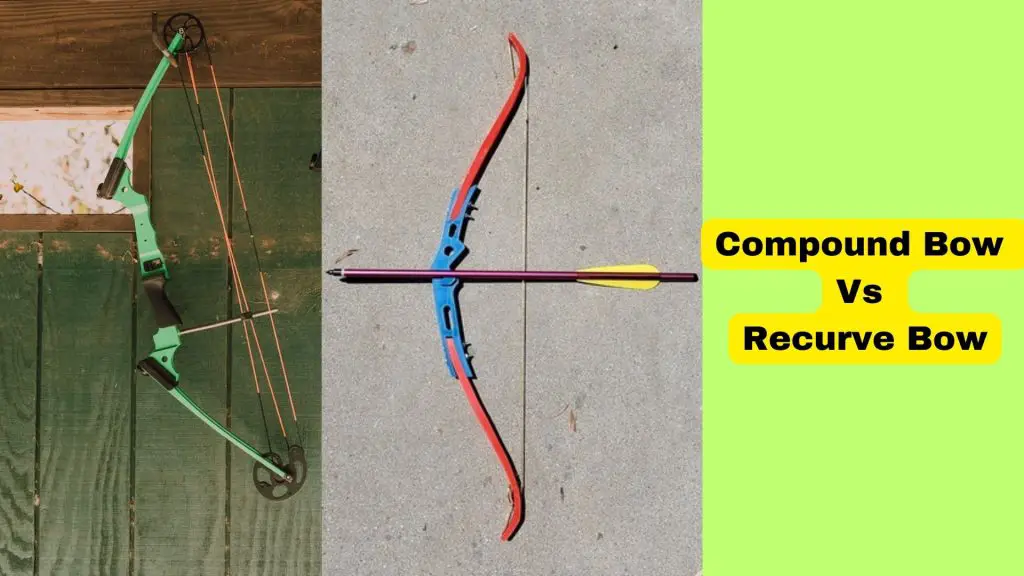
As a beginner archer, you might be wondering which type of bow to choose: a compound bow or a recurve bow?
Both types of bows have their own unique features and advantages, and it can be challenging to decide which one to use.
In this article, we will compare the design and construction, performance, shooting experience, maintenance, cost, the skill level required, and advantages and disadvantages of the compound and recurve bows.
By the end of this article, you will have a better understanding of which type of bow is best suited to your needs and preferences.
So, let’s dive in and explore the world of compound vs recurve bows!
Compound Or Recurve Bow
My Quick Answer: As a target shooter, I prefer recurve bows for a couple of reasons. Firstly, mastering control and perfecting aiming skills with a recurve is much more challenging, which provides a goal to strive towards and demands dedication to improve.
In contrast, using a compound bow is as easy as point and shoot, like an instant camera.
Secondly, the simplicity of design and structure of the recurve is a work of art that is pleasant to behold, while the complexity and mechanical nature of the compound bow make it seem like a machine that does all the work for you.
Recurve bows have a primitive nature that is refined, while compound bows are futuristic, modernized, and hi-tech.
However, if I were a hunter, my choice would be a compound bow. This is because it is more reliable for accuracy, and I would not want to increase the risk of wounding the animal and it running off to die a slow death.
Design and Construction
Explanation of compound bow design and components
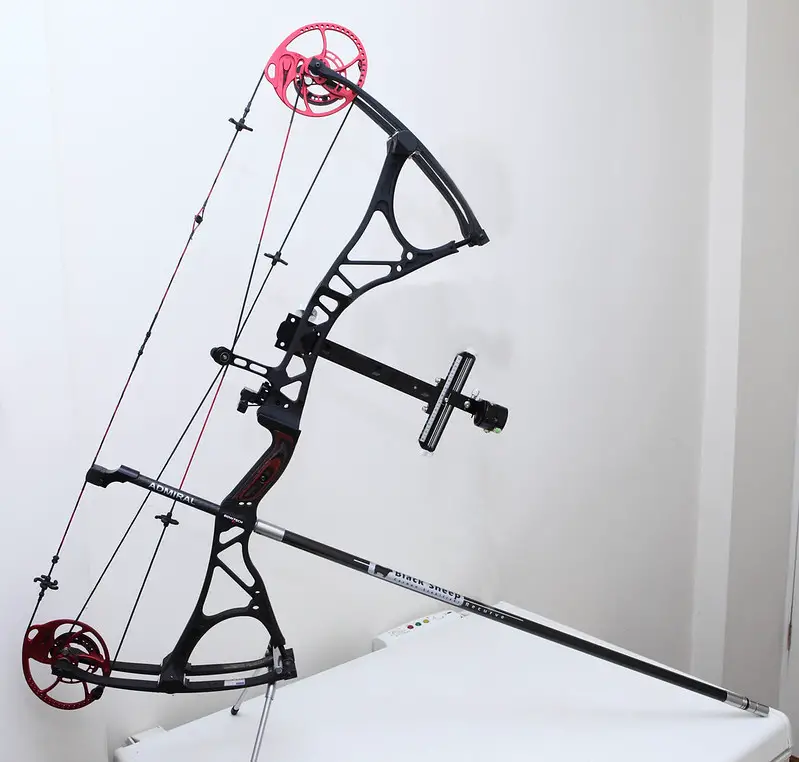
A compound bow is a modern bow design that incorporates a system of pulleys and cables to create a mechanical advantage.
The pulleys, also known as cams, are located at the top and bottom of the bow limbs and are connected by cables that attach to the bowstring.
As the bowstring is drawn back, the pulleys rotate and the cables move, resulting in a significant reduction in the amount of force required to hold the bowstring at full draw.
This reduction in force is called let-off and allows the archer to hold the bow steady for a longer period of time, resulting in increased accuracy.
In addition to the pulley system, a compound bow also includes a series of accessories such as sight, arrow rest, stabilizer, and quiver.
These accessories can be adjusted and customized to the archer’s preferences and shooting style, resulting in a highly personalized and efficient bow setup.
Explanation of recurve bow design and components
A recurve bow is a traditional bow design that has been used for centuries. It is a simple bow consisting of a curved limb and a string.
The limbs of a recurve bow are curved away from the archer when unstrung, and the tips curve back towards the archer when strung, creating a distinct “recurve” shape.
The shape of the limbs allows the bow to store and release more energy, resulting in a faster arrow speed and increased accuracy.
Recurve bows also have a simple design that requires minimal accessories.
The archer typically uses a finger tab or glove to protect their fingers, and a simple rest to hold the arrow in place. Recurve bows are also lighter in weight than compound bows, making them easier to carry and manoeuvre.
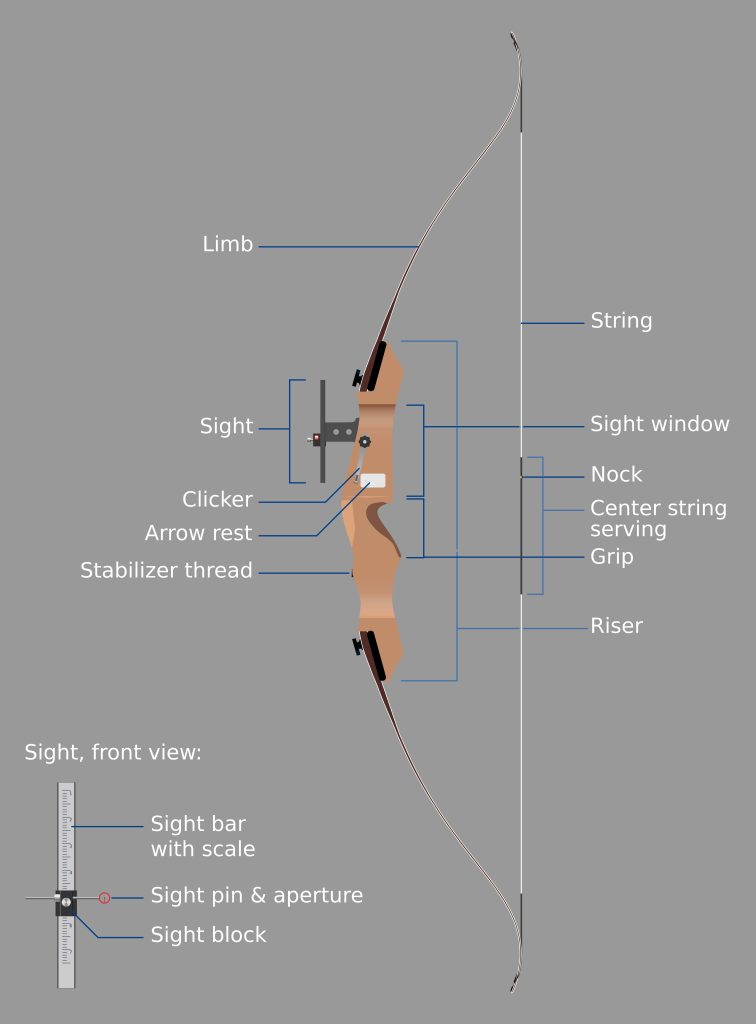
Differences between the two designs
The primary difference between a compound bow and a recurve bow is the use of a pulley system in the compound bow.
This system allows the archer to hold the bow at full draw for a longer period of time and reduces the amount of force required to do so.
In contrast, a recurve bow relies solely on the archer’s strength to hold the bow at full draw, making it more physically demanding to shoot.
Another difference is the number of accessories used with each bow.
Compound bows typically have a greater number of accessories, such as sights, stabilizers, and quivers, while recurve bows have a simpler design and require fewer accessories.
Additionally, the design of the limbs in each bow is different. Compound bows have straight limbs with no curves, while recurve bows have curved limbs that store and release more energy.
Performance
When it comes to choosing a bow, performance is a critical factor to consider.
Here, we’ll compare the performance of compound and recurve bows in terms of accuracy, speed, noise, and ease of use.
A. Accuracy
Accuracy is essential in archery, whether you’re hunting or competing.
Both compound and recurve bows can be accurate, but the compound bow’s design gives it an edge in this category.
The let-off provided by the pulley system makes it easier for the archer to aim and hold the bow steady at full draw, resulting in improved handling and accuracy.
B. Speed
Speed is another important factor to consider. Faster arrow speed means less time for the arrow to drop and provides flatter trajectory, which translates to greater accuracy.
Compound bows generally shoot arrows faster than recurve bows due to their pulley system.
The reduction in the amount of force required to hold the bowstring at full draw allows the archer to apply more force to the arrow, resulting in increased arrow speed.
C. Noise
Noise can be a concern for both hunters and competitive archers.
A noisy bow can alert game and cause them to flee, while a noisy bow in competition can be distracting to other archers.
In this category, recurve bows have the advantage over compound bows. Recurve bows have a simpler design with fewer moving parts, resulting in less noise when the bow is fired.
D. Ease of use
Ease of use is an important factor to consider, particularly for beginners.
Compound bows are generally easier to use than recurve bows due to the let-off provided by the pulley system.
The reduced amount of force required to hold the bow at full draw makes it easier for beginners to maintain proper form and focus on aiming.
Additionally, the customizable accessories on a compound bow can make it easier for the archer to find a comfortable and consistent shooting position.
Recurve bows, on the other hand, require more physical strength to hold at full draw and require a more consistent form to achieve consistent accuracy. This can make them more challenging for beginners to use.
Shooting Experience
In addition to design and performance, the shooting experience is an essential factor to consider when choosing between a compound and recurve bow.
Here, we’ll compare the shooting experience of both bows in terms of comfort, stability, recoil, and draw cycle.
Comfort
Comfort is a crucial factor in shooting experience. A bow that is comfortable to hold and shoot can help prevent fatigue and improve accuracy.
Compound bows are generally more comfortable to shoot than recurve bows due to their design.
The let-off provided by the pulley system reduces the amount of force required to hold the bow at full draw, making it more comfortable to aim and shoot.
Additionally, the customizable accessories on a compound bow can make it easier for the archer to find a comfortable and consistent shooting position.
Recurve bows, on the other hand, require more physical strength to hold at full draw and can cause fatigue over time.
However, the simplicity of the design can make them easier to handle for some archers.
Stability
Stability is critical for consistent accuracy.
A bow that is stable and doesn’t move during the shot can help ensure that the arrow hits the intended target.
Compound bows have a more stable design than recurve bows due to their larger size and heavier weight.
The longer riser on a compound bow provides a larger surface area for the archer to grip, resulting in improved stability. Additionally, the let-off provided by the pulley system can reduce the amount of movement during the shot.
Recurve bows are generally lighter and have a shorter riser, making them less stable than compound bows.
However, some archers prefer lighter weights and shorter lengths, as it can make them easier to handle.
Recoil
Recoil is the backward movement of the bow after the arrow is released. Too much recoil can be uncomfortable and affect accuracy.
Compound bows generally have less recoil than recurve bows due to their design.
The let-off provided by the pulley system reduces the amount of force required to hold the bow at full draw, resulting in less movement during the shot.
Recurve bows have more recoil than compound bows due to the amount of force required to hold the bow at full draw.
However, some archers prefer the recoil of a recurve bow as it can provide feedback on the shot and help improve consistency.
Draw Cycle
The draw cycle refers to the force required to draw the bowstring back to full draw.
A smooth and consistent draw cycle can make shooting more comfortable and improve accuracy. Compound bows have a more consistent draw cycle than recurve bows due to their pulley system.
The pulley system allows the archer to hold the bow at full draw with less effort, resulting in a smoother and more consistent draw cycle.
Recurve bows have a less consistent draw cycle than compound bows due to the amount of force required to hold the bow at full draw.
The draw weight of a recurve bow increases as the bowstring is drawn back, resulting in a more challenging draw cycle.
Maintenance
When it comes to archery, proper maintenance is crucial for the longevity and performance of your bow.
Both compound and recurve bows require regular maintenance, although the requirements may differ between the two types.
Maintenance requirements for compound bows
Compound bows have more moving parts than recurve bows, which can make maintenance more involved.
Regular maintenance is necessary to ensure that the bow functions correctly and performs optimally. The following are some of the maintenance requirements for compound bows:
String maintenance – The bowstring on a compound bow requires regular waxing to prevent fraying and maintain its strength.
Cable and pulley maintenance – The cables and pulleys on a compound bow require regular lubrication to ensure smooth operation.
Cam maintenance – The cams on a compound bow require regular inspection to ensure that they are functioning correctly and that there is no damage to the cam or cam bearings.
Limb maintenance – The limbs on a compound bow require regular inspection for cracks or damage. Additionally, the limb bolts should be checked regularly to ensure that they are tightened correctly.
Arrow rest maintenance – The arrow rest on a compound bow requires regular inspection to ensure that it is functioning correctly and that there is no damage to the rest or its components.
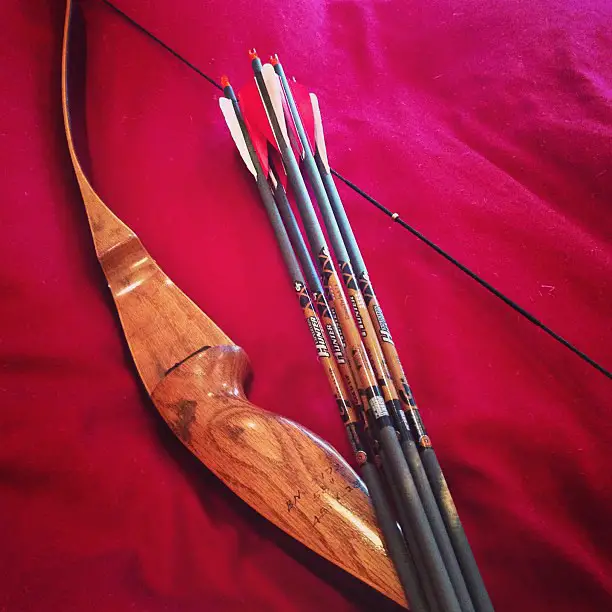
Maintenance requirements for Recurve bows
Recurve bows are simpler in design than compound bows, which can make maintenance less involved.
However, regular maintenance is still necessary to ensure that the bow functions correctly and performs optimally.
The following are some of the maintenance requirements for recurve bows:
String maintenance – The bowstring on a recurve bow requires regular waxing to prevent fraying and maintain its strength.
Limb maintenance – The limbs on a recurve bow require regular inspection for cracks or damage. Additionally, the limb bolts should be checked regularly to ensure that they are tightened correctly.
Arrow rest maintenance – The arrow rest on a recurve bow requires regular inspection to ensure that it is functioning correctly and that there is no damage to the rest or its components.
Differences in maintenance between the two Types
The main difference in maintenance between compound and recurve bows is the amount of maintenance required for the moving parts on a compound bow.
The cables, pulleys, and cams on a compound bow require regular inspection and lubrication to ensure that they are functioning correctly.
Recurve bows, on the other hand, have fewer moving parts, which can make maintenance less involved.
Cost
When it comes to choosing a bow, the cost can be a significant factor for many people.
Both compound and recurve bows come in a wide range of prices, depending on the quality and features.
A. Cost of compound bows
Compound bows tend to be more expensive than recurve bows due to their more complex design and the additional technology involved.
Entry-level compound bows can start around $300 and go up to over $1,000 for high-end models. Additionally, accessories such as sights, stabilizers, and arrow rests can add to the overall cost.
B. Cost of recurve bows
Recurve bows tend to be less expensive than compound bows, as they have a simpler design with fewer parts.
Entry-level recurve bows can start around $100 and go up to around $500 for higher-end models.
Recurve bows also have fewer accessories, which can keep the overall cost lower.
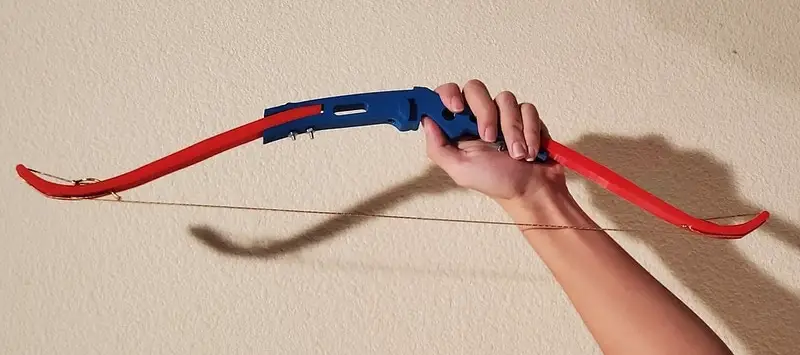
C. Comparison of the two costs
While compound bows are generally more expensive than recurve bows, there is a wide range of prices for both types.
The cost of a bow can depend on several factors, including the quality of materials, the features, and the brand.
Ultimately, the cost of a bow should be weighed against its performance, and the individual’s needs and preferences.
Skill Level Required
Another important factor to consider when choosing between a compound or recurve bow is the skill level required to shoot effectively.
A. Skill level required for compound bows
Compound bows require a higher level of skill to shoot effectively due to their more complex design and technology.
The additional components, such as the cams, pulleys, and cables, can make it more difficult for beginners to master.
Additionally, compound bows often require more maintenance and adjustment than recurve bows, which can be challenging for those with limited experience.
B. Skill level required for recurve bows
Recurve bows are generally easier to shoot than compound bows and require less skill to master.
They have a simpler design with fewer components, making them more intuitive to use. Recurve bows also have a shorter learning curve, and beginners can often achieve accuracy quickly.
C. Comparison of the two skill levels
While both compound and recurve bows require a certain level of skill to shoot effectively, there is a significant difference in the level of skill required.
Compound bows are more complex and require more experience and practice to master. Recurve bows, on the other hand, are easier to use and have a shorter learning curve.
Advantages and Disadvantages
Both compound and recurve bows have their advantages and disadvantages. Here’s a breakdown of each type:
A. Advantages of compound bows
- Increased accuracy: Compound bows are known for their accuracy due to their advanced technology and design.
- Higher arrow speed: Compound bows have a higher arrow speed than recurve bows due to their use of pulleys and cams.
- Reduced recoil: The design of compound bows reduces recoil, making them easier to shoot for longer periods of time.
- Accessories: Compound bows come with a variety of accessories such as sights, stabilizers, and arrow rests, which can enhance performance and improve accuracy.
B. Disadvantages of compound bows
- Complexity: The complex design of compound bows can make them more difficult to maintain and adjust.
- Cost: Compound bows are generally more expensive than recurve bows due to their technology and components.
- Noise: The additional components of a compound bow can create more noise, which can be a disadvantage when hunting or in certain shooting environments.
C. Advantages of recurve bows
- Simplicity: Recurve bows have a simple design with fewer components, making them easier to maintain and adjust.
- Cost: Recurve bows are generally less expensive than compound bows, making them more accessible to beginners.
- Quietness: Recurve bows are typically quieter than compound bows due to their simpler design.
- Portability: Recurve bows are often more compact and easier to transport, making them ideal for outdoor activities like hunting or camping.
D. Disadvantages of recurve bows
- Accuracy: Recurve bows are generally less accurate than compound bows due to their simpler design.
- Lower arrow speed: Recurve bows have a lower arrow speed than compound bows, which can affect their performance in certain situations.
- Recoil: The simpler design of recurve bows can result in increased recoil, making them more difficult to shoot for longer periods of time.
Check: Right or left handed bow:What To choose!
How To Hold The Bow While Shooting
Conclusion
Compound Or Recurve Bow: Which Bow Should I Choose?
Ultimately, the choice between a compound or recurve bow depends on personal preference and individual needs.
It’s important to try out both types of bows and determine which one feels more comfortable and effective for your shooting style and intended use.
If your goal is to become an Olympic archer, it’s best to start with a recurve bow since that’s what’s used in the Olympics.
On the other hand, if you’re planning to use a bow for hunting, a compound bow may be the better choice since it allows for a lighter draw weight and greater accuracy.
Another case could be;
If you’re looking for a more advanced and high-tech option, a compound bow might be the way to go.
Or,
If you’re a beginner or just looking for a simpler and more affordable option, a recurve bow might be the best choice for you.
Beginners also like recurves due to its simplicity, ease of assembly and easy to stringing process.
Note:
Beginners can often find the compound bow easier to use compared to the recurve bow as learning to use a recurve bow properly can take a significant amount of time.
However, the cost factor comes into play. The compound bow upfront cost is high.
While In the case of recurve bow the upfront cost can be low.
However, your cost can increase later If you invest in high-quality limbs, risers, arrows/nocks, sights, string, and stabilizers then the price can be significantly higher than that of a high-quality compound bow.
Remember, the most important factor in archery is to enjoy the sport and have fun.
Whichever type of bow you choose, make sure to practice safe archery techniques, continue to hone your skills, and enjoy the journey of becoming a skilled archer.
If you like crossbow you can check this comparison: Recurve vs Compound Crossbows

